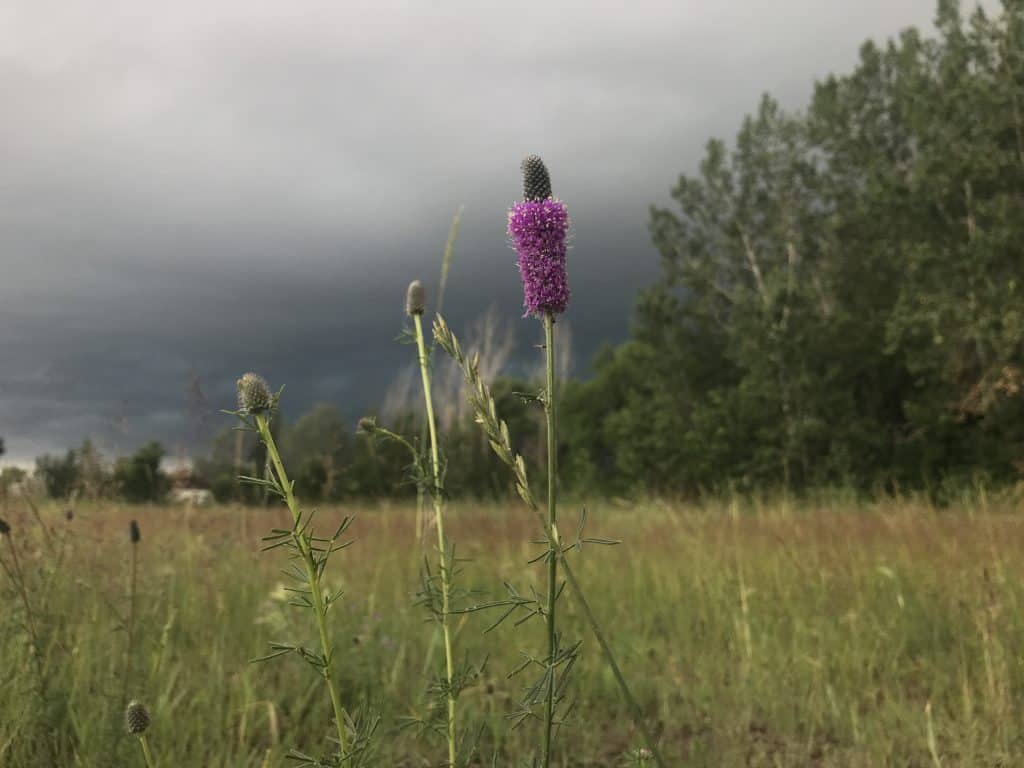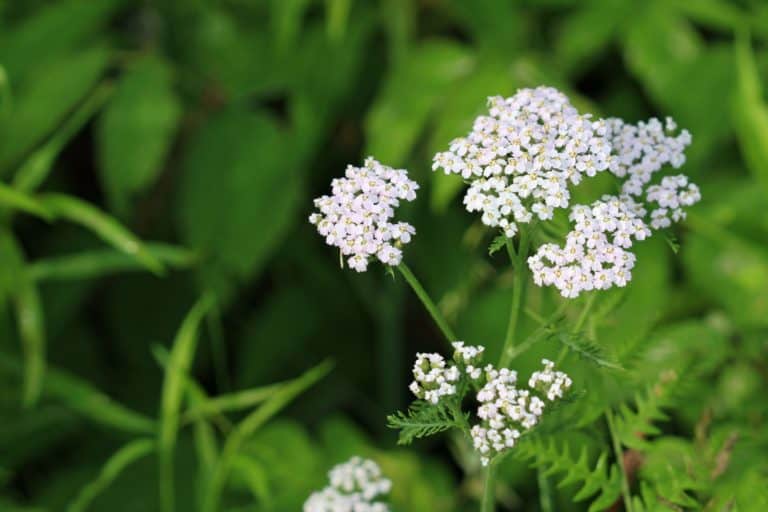What exactly is native gardening?
Native plants are those that are indigenous to a specific geographical location. Simply put, gardening using flowers, grasses, shrubs and trees specific to the natural landscape where you live is called “native gardening”.
Some native plant gardeners choose to exclusively use native plants, sometimes being as particular as choosing only plants that grow within a few miles of their location. Others (such as myself) choose to intersperse some favorite (not invasive!) non-natives and sometimes cultivars.

Why garden with native plants?
Benefits for wildlife
By filling your garden and yard with native plants, you’re providing habitat and food for beneficial native insects, birds, and other wildlife.
You’ll be pleasantly surprised at the different species that will frequent your native garden space. Different birds, butterflies, other insects. Maybe even some frogs or toads, if you have a water source on your property!
I sometimes just sit in or near my gardens in summer and watch all the insect activity…and my heart just fills with joy.
Decrease water consumption
Although native plants will need to be watered for the first year after planting, water supplementation may be necessary only during periods of extended drought once they are established. (Of course, this is assuming that they are planted in a location that is specific to their needs!)
This is entirely different than lawns which need to be watered weekly or more, and most non-native plants also require frequent watering.
Lessen pest pressure
Native plants are well suited to the local growing conditions, pest species, etc. Therefore, they don’t require all manner of pesticides and herbicides to keep them in tip top shape. In addition, they attract beneficial insects and other wildlife, such as birds, which also help to keep insect populations in balance.
Restore soil health
Not only do native plantings benefit the wildlife above ground, their healthy root systems also encourage a healthy balance in soil microorganisms.
Native grasses and flowers are exceptional at water filtration and management, as evidenced in our swale. Before it was planted with native grasses and forbs, it became basically a huge pond whenever it rained or when there was heavy snow melt. Now, water doesn’t even pool AT ALL. The plants immediately pull it down and away. It is truly incredible!
Closely related to such water management, soil erosion becomes a non-issue. In addition to all those sturdy and deep taproots adding a great deal of stability, the above ground growth protects the soil from wind erosion. Here in windy Southern Alberta, that’s a necessity!
Also different than typical traditional mulched beds- native gardens are left intact over the winter to continue to support native wildlife. Multiple different insects- especially bees- bury in native plant stems or the soil. And birds will eat seeds from the echinacea and other plants left standing over winter.
Leaves and plant matter breaks down and feeds the soil, naturally amending it. Then, in late spring, the native flower garden or grasses can be cut down, burned, or mowed for the new season of growth.
Help the environment
Less lawn = less mowing! Awesome for the environment! Plus you’ll free up time for some weeding 😉
How to start a native garden
Research and planning
My top tip would be to find a local native plant nursery, and find out if they offer plant/site consultations. Having an expert survey your location and then recommend specific plants would be invaluable; certainly worth whatever fee they charge for this service.
If that’s not an option, look into hiring a native plant expert online, such as Benjamin Vogt. Or take some of his courses before beginning your native garden journey. Learning is key. I could have avoided many mistakes, had I gone this route!
Before you begin any courses or research, take note of how much sun, shade, wind, and moisture the location receives. Plus, try some easy tests to find out what type of soil you are working with.
When you are researching and selecting your plants, consider the bloom times. You’ll need to ensure there are plants, shrubs, or trees blooming throughout the seasons, to feed the pollinators.
You will need to give thought to the growth habits of the plants. It may not be wise to plant yarrow next to liatris, for example. The rapidly spreading yarrow will quickly crowd out the very slow-growing liatris.
As far as how many plants you’ll need…about one plug per square foot is the general recommendation. As plugs are quite expensive (upwards of $5 apiece here in Alberta!), it’s more cost effective to purchase plugs for the flowers, and then seed grass in between as the “green mulch” layer.
(And it’s more important than I realized to have a green mulch layer…! You will avoid a lot of unnecessary weeding with that in place. For more information, visit Benjamin Vogt’s blog.)
Site preparation
This is another of the areas I made a lot of mistakes in my yard. I wish I had known how important it was. I cannot stress this enough: make sure your plot is weed and grass free before you begin! As you likely know, I despise using chemicals, but this is the one and only time I would recommend it.
If you have adequate time and the space isn’t too large, you can try solarization or other methods of killing weeds, but no matter what, make sure the area isn’t covered in weed seed or has grasses growing in it. Otherwise, you will be doing backbreaking weeding for years to come. Ask me how I know!

Plants and grasses that I recommend
In my southern Alberta prairie garden, I’ve had great success with some types of native plants and less success with others. Here I’m listing some of my current favorites! (Note: some of these are best suited for larger spaces. Be sure to research them and make sure their spreading habits are suitable for your space!)
- Sticky Geranium (Geranium viscosissimum)
- Early Blue Violets (Viola adunca, early bloomer)
- Asters (Symphiotrichum laeve or Eurybia conspicua- can be aggressive)
- Goldenrod (I recommend Solidago simplex, a less aggressive type)
- Purple Coneflower (Echinacea purpurea)
- Yarrow (Achillea millefolium, an aggressive spreader!)
- Blue Grama Grass (Bouteloua gracilis)
- Blue Flax (Linum lewisii)
- Wild Strawberry (Fragaria virginiana, makes a great spreading groundcover)
- Little Bluestem (Schizachyrium scoparium, lovely statement grass)
- Rocky Mountain Fescue (Festuca saximontana)
- Prairie Smoke or Three Flowered Avens (Geum triflorum, small but early bloomer and unique flowers)
- Blazing Star (Liatris ligustylis, Liatris punctata, love these but have better success with cultivars)
- Black Eyed Susan (Rudbeckia hirta, a cheerful, prolifically reseeding annual)
- Purple Prairie Clover (Dalea purpurea)

Be sure to browse around this blog and others I’ve listed to find more information before starting your own native wildflower garden. If you’re still not convinced, check out Doug Tallamy’s recent “Biodiversity Day” post here.
Although it takes time, effort, and financial investment to begin, the payoffs are so great! It’s incredibly rewarding to see all the insect activity in the summer, as well as the beautiful blooms. And don’t forget about the positive physical and mental benefits of gardening!
Happy Gardening!

